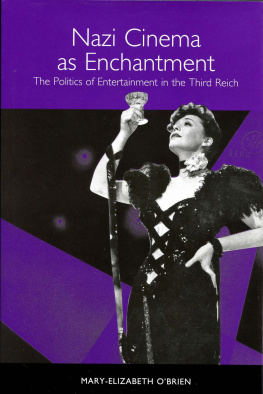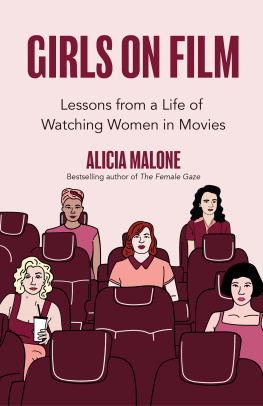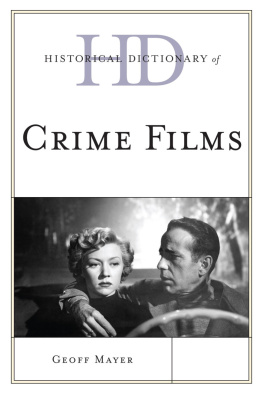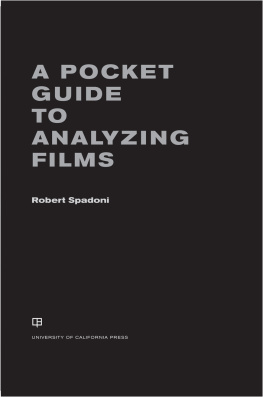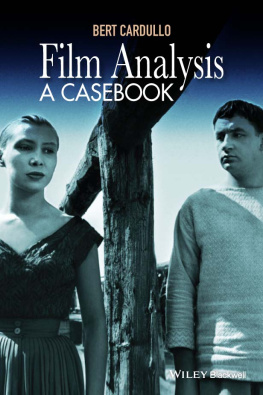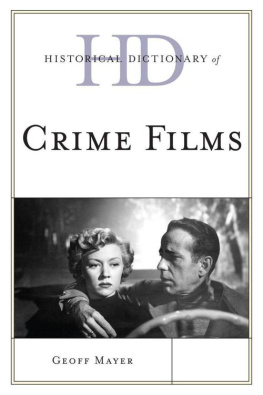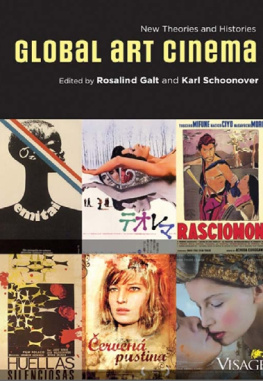
The New Womans Film
With the chick flick arguably in decline, film scholars may well ask: what has become of the womans film? Little attention has been paid to the proliferation of films, often from the independent sector, that do not sit comfortably in either the category of popular culture or that of high artfilms that are perhaps the corollary of the middle-brow novel, or smart-chick flicks. This book seeks to fill this void by focusing on the steady stream of films about and for women that emerge out of independent American and European cinema, and that are designed to address an international female audience. The new womans film as a genre includes narratives with strong ties to the womans film of classical Hollywood while constituting a new distinctive cycle of female-centered films that in many ways continue the project of second-wave feminism, albeit in a modified form.
Topics addressed include The Bridges of Madison County (Clint Eastwood, 1995); the feature-length films of Nicole Holofcener, 19962013; the film roles of Tilda Swinton; Rachel Getting Married (Jonathan Demme, 2008); Blue Jasmine (Woody Allen, 2013); Frances Ha (Noah Baumbach, 2012); Belle (Amma Asante, 2013); Fifty Shades of Grey (Sam Taylor-Johnson, 2015); and Jane Campions Top of the Lake (Sundance Channel, 2013).
Hilary Radner is Professor of Film and Media Studies in the Department of History and Art History at the University of Otago. Her research interests revolve around understanding the representations of gender and identity in contemporary visual culture, particularly in terms of how these evolve over time in relation to second-wave feminism. She is the author of two monographs: Shopping Around: Feminine Culture and the Pursuit of Pleasure (1995) and Neo-Feminist Cinema: Girly Films, Chick Flicks and Consumer Culture (2011). Her co-edited volumes include Film Theory Goes to the Movies (1993), Feminism at the Movies: Understanding Gender in Contemporary Cinema (2011), and A Companion to Contemporary French Cinema (2015).
First published 2017
by Routledge
711 Third Avenue, New York, NY 10017
and by Routledge
2 Park Square, Milton Park, Abingdon, Oxon OX14 4RN
Routledge is an imprint of the Taylor & Francis Group, an informa business
2017 Taylor & Francis
The right of Hilary Radner to be identified as the author of this work has been asserted by her in accordance with sections 77 and 78 of the Copyright, Designs and Patents Act 1988.
All rights reserved. No part of this book may be reprinted or reproduced or utilized in any form or by any electronic, mechanical, or other means, now known or hereafter invented, including photocopying and recording, or in any information storage or retrieval system, without permission in writing from the publishers.
Trademark notice: Product or corporate names may be trademarks or registered trademarks, and are used only for identification and explanation without intent to infringe.
Library of Congress Cataloging-in-Publication Data
Names: Radner, Hilary author.
Title: The new womans film : femme-centric movies for smart chicks /
Hilary Radner.
Description: New York : Routledge, 2017. | Includes bibliographical
references and index.
Identifiers: LCCN 2016038505 | ISBN 9781138186804 (hardback) |
ISBN 9781138186811 (pbk.)
Subjects: LCSH: Women in motion pictures. | Motion pictures for women.
Classification: LCC PN1995.9.W6 R33 2017 | DDC 791.43/6522dc23
LC record available at https://lccn.loc.gov/2016038505
ISBN: 978-1-138-18680-4 (hbk)
ISBN: 978-1-138-18681-1 (pbk)
ISBN: 978-1-315-64359-5 (ebk)
Typeset in Bembo
by Apex CoVantage, LLC
For Charlotte and Roy, who gave me a copy of Molly Haskells From Reverence to Rape for Christmas in 1976, the first step in a long journey that eventually led to this volume.
Contents
As with many so-called single-authored monographs, the term single is misleading; I received significant support and encouragement from those around me, without whom this project would never have come to fruition. I would like to thank, in the first instance, the Division of Humanities of the University of Otago for its generous support in the form of research grants and research leave. I owe a further debt to my students who have enlivened my life with their views and ideas about film and feminismyou are far too many for me to name, but you will always be in my thoughts. The Margaret Herrick Library of the Academy of Motion Picture Arts and Science and its staff were an inestimable source of information; I and the field of cinema studies more generally continue to benefit now into the twenty-first century from the generosity of this institution. A number of my colleagues around the world enriched my understanding of my topic with their feedback and their invitations: Thomas Adams, Christa Blmlinger, Raymond Bellour, Stella Bruzzi, Celestino Deleyto, Pamela Church Gibson, Vicki Karaminas, Barry King, Kathleen McHugh, P. David Marshall, Walter Metz, Jane Mills, Raphalle Moine, Marimar Azcona Montoliu, Jane Park, Veronica Pravadelli, Genevive Sellier, Yannis Tzoumakis, Thomas Schatz, Janet Staiger and Ginette Vincendeau. I also owe a great debt of gratitude to Erica Wetter, my editor at Routledge, for her understanding and encouragement and to Mia Moran for her continued support. Radhika Raghav and Rosi Crane provided invaluable assistance as researchers. Alex Dickie helped keep my dates straight and supplied me with numerous articles on how Hollywood disadvantages women, while keeping my spirits up with his endless enthusiasm for things cinematic. I especially want to thank all my Dunedin friends for at least pretending to forgive me for my complete neglect during the final weeks of writing. As always, my greatest debt is to Alistair Fox, my mainstay, who believed in this project even when I did not.
Earlier versions of some material included in this book appeared in a much different form in Hilary Radner, Personal Cinema and the Smart-Chick Film: Rachel Getting Married ; US Independent Film after 1989: Possible Films , ed. Claire Perkins and Constantine Verevis (Edinburgh: Edinburgh University Press, 2015) 155164; Hilary Radner, The Historical Film and Contemporary French Cinema: Representing the Past in the Present, in A Companion to Contemporary French Cinema , ed. Alistair Fox, Michel Marie, Raphalle Moine, and Hilary Radner (Malden, MA: Wiley-Blackwell, 2015), 289313; Hilary Radner, Creating Female Audiences: The Decline of the Girly Heroine and the Return of the Formidable Femme, COMUNICAZIONI SOCIALI Journal of Media, Performing Arts and Cultural Studies 3 (2014): 357367; Hilary Radner, Trans-national Celebrity and the Fashion Icon: The Case of Tilda Swinton, Visual Performance Artist at Large, European Journal of Womens Studies , 23.4 (2016): 40114; Hilary Radner, The Rise and Fall of the Girly Film: From the Womans Picture to the New Womans Film, the Chick Flick and the Smart-chick Film, in The Routledge Companion to Cinema and Gender , ed. Kristin Len Hole, Dijana Jelaa, E. Ann Kaplan, Patrice Petro (London/New York: Routledge, 2017), 121130.
This volume evolved as a consequence of my curiosity about the widely held view that the influence of female stars and audiencesthough significant within classical Hollywood, a period known as the studio eradeclined in the second half of the twentieth century.


